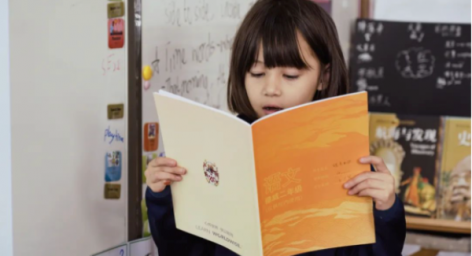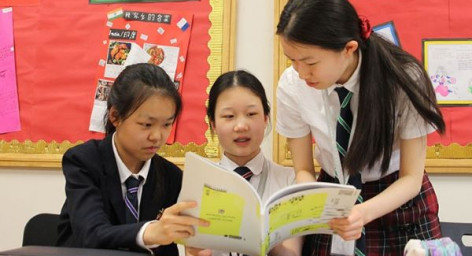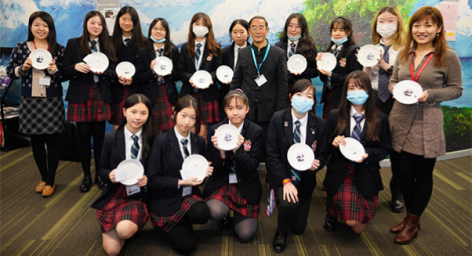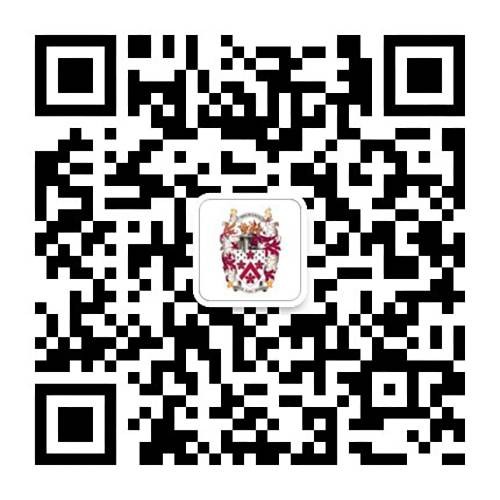Mandarin Language Programme
Importance of Learning Mandarin
Mandarin is important not just because it is the way the Chinese world communicates, but because it is first and foremost the way in which the Chinese world thinks.
Ever since Dulwich College Shanghai Pudong opened in 2003 as an international school, we have always put a strong emphasis on knowing and appreciating the language and culture of our host country. The focus of our Chinese learning programme is thus not just on how fluently our students can express themselves in Chinese, but rather on them being able to understand the “world” as it is – where people think in ways as fundamentally different as English and Mandarin—and to navigate that world effectively without hesitation. Only then will our students be able to build bridges between people of any nation.
We offer multiple learning pathways to students of all ages and abilities — from native Mandarin speakers to second language learners to absolute beginners who might be learning Mandarin as their third or fourth language. Our Mandarin learning programme not only lays a solid foundation for young learners' language development, but also incorporates innovative technology and delivers outstanding student IB exam results.

Benefits of Mandarin learning programme
The Mandarin learning programme offers benefits that extend far beyond language proficiency—it provides a gateway to understanding a distinctive cultural mindset while equipping students with essential communicative and analytical skills. Mandarin is not only the medium through which the Chinese world communicates but also the framework for its thought processes. Designed to help students navigate a culturally diverse world, the programme fosters an appreciation of both language and culture through multiple learning pathways tailored for native speakers, heritage learners, and non-native learners alike.
Students engage with innovative teaching approaches, within immersive and technology-enhanced learning environments that support the development of listening, speaking, reading, and writing skills. Instruction is further enriched by a globally oriented approach that emphasizes critical reflection and philosophical inquiry, nurturing students' ability to think deeply and communicate thoughtfully. In pathways focused on first language proficiency, learners are encouraged to explore advanced strategies for engaging with texts and expressing their ideas in imaginative and sophisticated ways. Classroom activities and discussions connect real-life scenarios to language use, empowering learners to confidently express themselves, critically analyze authentic texts, and extend their learning into the wider community.
Ultimately, the programme cultivates not only impressive academic outcomes and deep functional competence in Mandarin but also vital soft skills—adaptability, effective communication, and a nuanced appreciation of cultural diversity—that prepare students to build bridges between nations and thrive as engaged global citizens in an increasingly interconnected world.
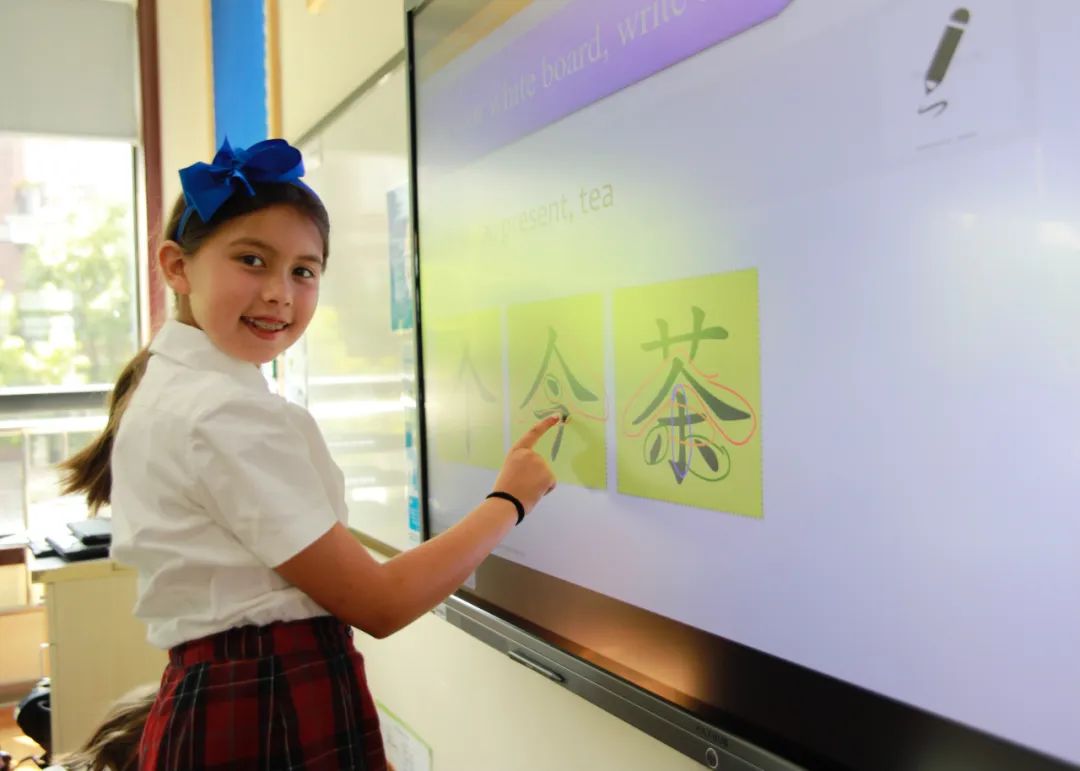
Wohui Mandarin Programme
As early as Year 1 and 2, students learning Mandarin as a Foreign Language (MFL) have access to the innovative Wohui Mandarin programme, meaning “I Can.” Conceived and developed in DCSPD, the Wohui programme gives MFL students opportunities to actively use the language and to navigate real-world scenarios. Spoken and written language are learned in parallel but independently of each other, maximising students’ progress by allowing them to focus on one new thing at a time. Furthermore, “Wohui follows the unique characteristics of the Chinese language,” explains Ms Parker who pioneered the development of the curriculum. “Characters are introduced in terms of their simplicity and their frequency of use, thus enabling students to rapidly build up a useful and powerful bank of characters with which to make sense of the Chinese world.”
The Chinese learning programme is supported by an online platform that puts learning in the hands of students and empowers teachers and parents to support them on their learning journeys. In the words of Professor Hu Wenhua from Fudan University, this “encourages students to become strong independent learners" and enables teachers to “work more effectively in the classroom.” Ms Parker adds that with Wohui teachers are better able to “identify and help solve problems encountered by their students, pay more attention to individual needs and provide detailed feedback in a timely manner.”

Three Mandarin Learning Pathways
This pathway is designed for students who have acquired Mandarin as their first language, either at home or through schools where Mandarin was the medium of instruction. English is typically their second language, and their home environment is predominantly Mandarin-speaking.
Within the CNL pathway, Mandarin is the primary language used in the classroom by both teachers and students. The programme focuses on further developing students' abilities in analysis and evaluation through exposure to a wide range of Chinese literary texts. In addition, students are expected to refine their practical and creative writing skills.
An essential component of this pathway is fostering the ability to critically analyze and interpret a variety of texts from different genres, cultures, and historical periods, as well as to communicate ideas effectively in both oral and written forms.
To support their learning, students are strongly encouraged to read extensively in Chinese, including books, magazines, and newspapers, to deepen their understanding of Chinese literature and strengthen their comprehension skills.
Students following this pathway typically go on to take IGCSE Chinese as a First Language and IB Chinese A: Language and Literature.
This pathway is designed for heritage students who have lived outside of China (or other regions where Mandarin is an official language), as well as non-heritage students who have been living in China and studying Mandarin for an extended period. These students are generally able to handle age-appropriate communication tasks, though they may not yet be fully proficient in literacy skills in Mandarin.
Approximately 90% of classroom instruction and teacher communication is conducted in Mandarin. The primary focus in this pathway is the development of students’ reading and writing skills in Chinese, enabling them to understand and analyze increasingly complex written and spoken texts. Students will also work toward recognizing and interpreting the subtleties and nuances of the Mandarin language across a broad range of forms and styles.
The learning goal is to help students achieve advanced proficiency in Mandarin, allowing them to communicate effectively and appropriately in diverse contexts, deepen intercultural understanding, and critically engage with authentic materials through analysis and personal response.
Students on this pathway typically progress to IGCSE Chinese as a Second Language, followed by the IB Chinese B Standard Level or Higher Level courses.
This pathway is for non-native and non-heritage students. From the initial stage, the course places a strong emphasis on developing functional skills in listening, speaking, and reading Mandarin. Students in this pathway use the Wo Hui Mandarin approach and website resources to support their learning.
The learning goal is to develop the ability to communicate effectively and appropriately in Mandarin across familiar and some unfamiliar contexts, while enhancing intercultural understanding and demonstrating comprehension of straightforward authentic texts through both oral and written expression.
To reinforce their learning, students are encouraged to practise the skills acquired in the classroom within the wider community and in real-life language usage settings. Students following this pathway typically take IGCSE Chinese as a Foreign Language or GCSE Chinese, followed by IB Chinese B Standard Level.
Dual Language Learning in DUCKS
In DUCKS, Dual Language learning is a fundamental part of our student development. Our approach is based upon a range of recognised theory about how children learn language and has been developed through in-depth academic and action research by our own leaders and teachers. The Mandarin learning programme exposes young learners to both English and Mandarin languages in their natural learning context throughout the day rather than just through formal language opportunities. By providing an environment rich in learning opportunities, with one teacher focusing on English and a second on Mandarin, young children gain the confidence to use language with meaning rather than just through imitation.
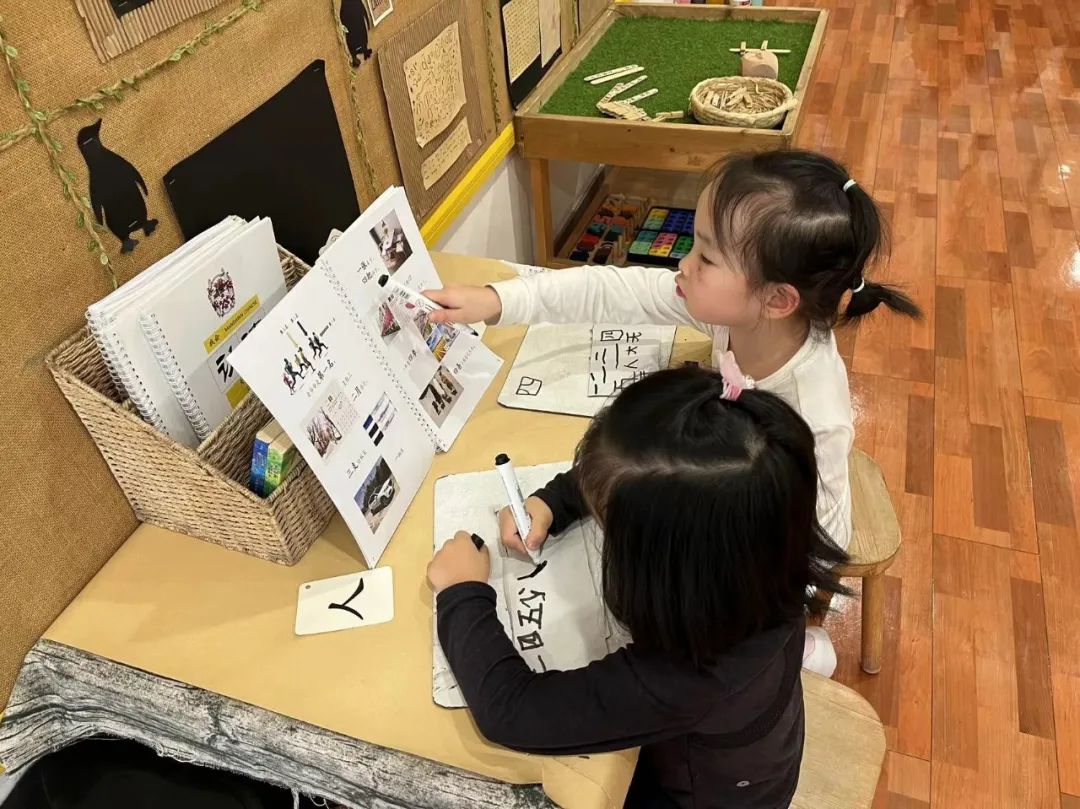
More about Mandarin Learning at Dulwich College Shanghai Pudong




